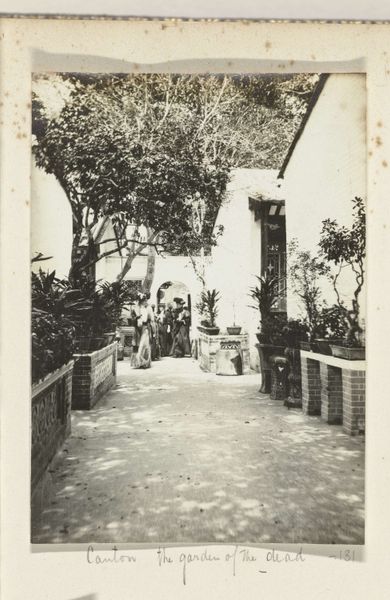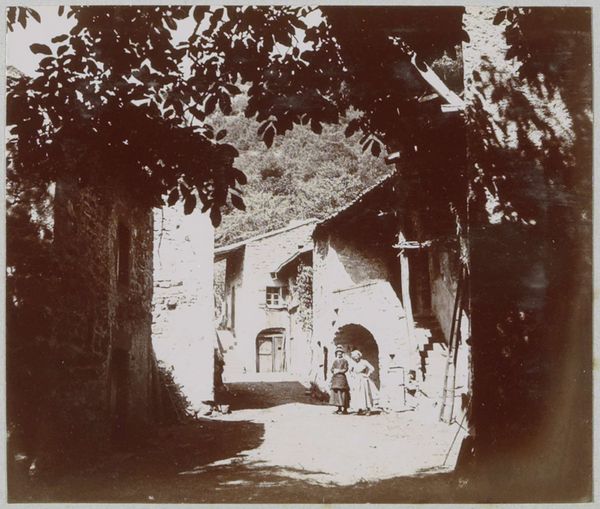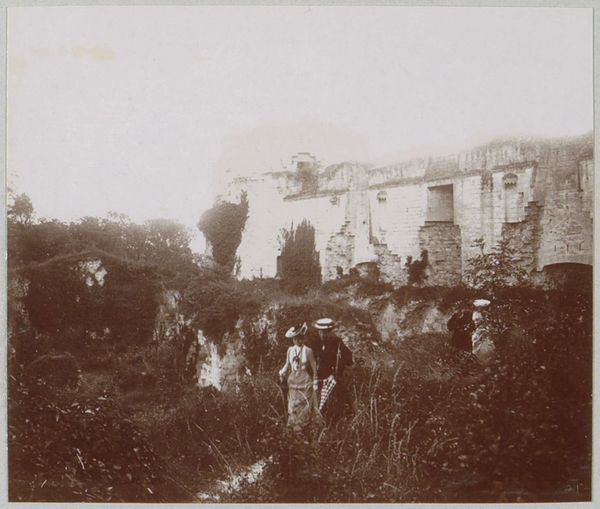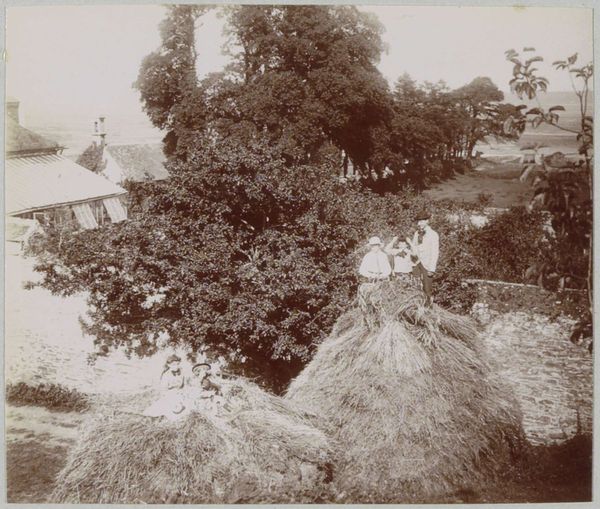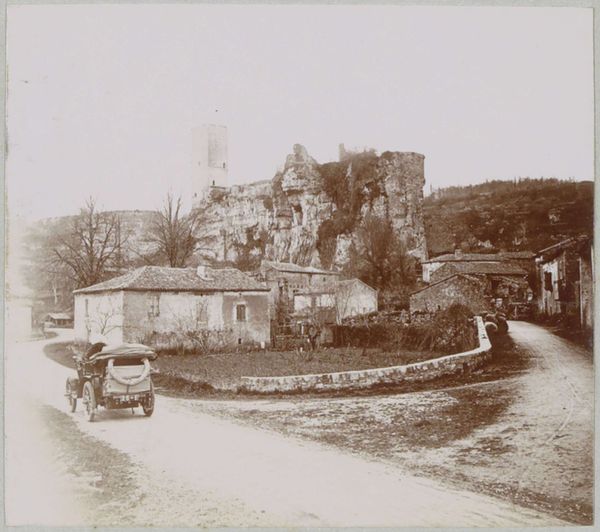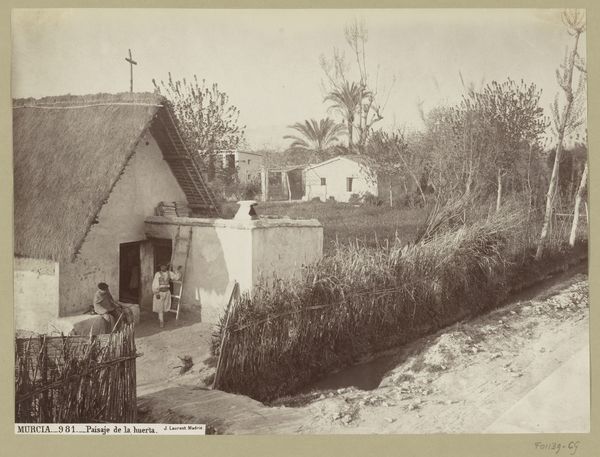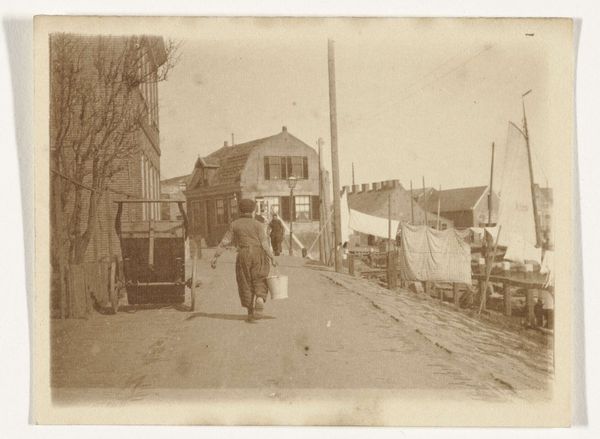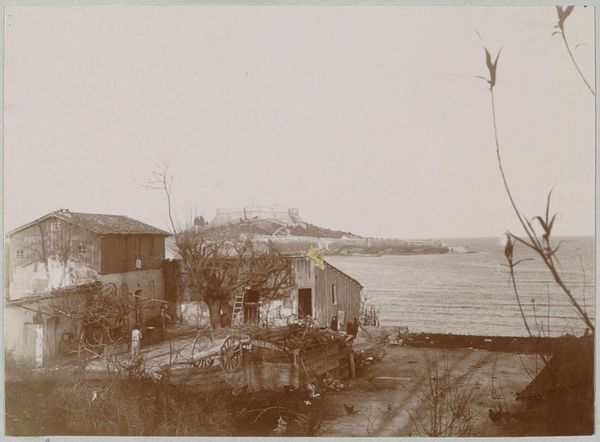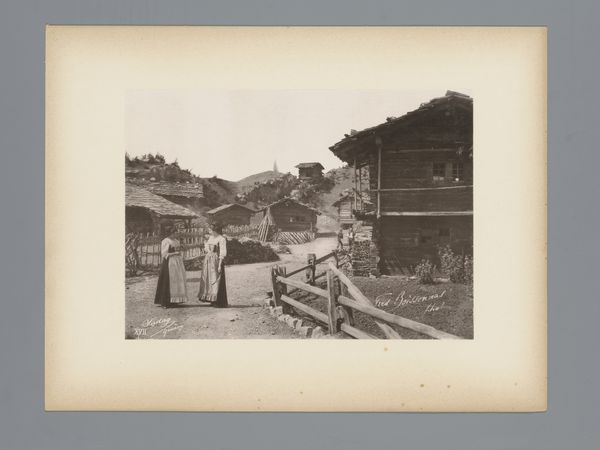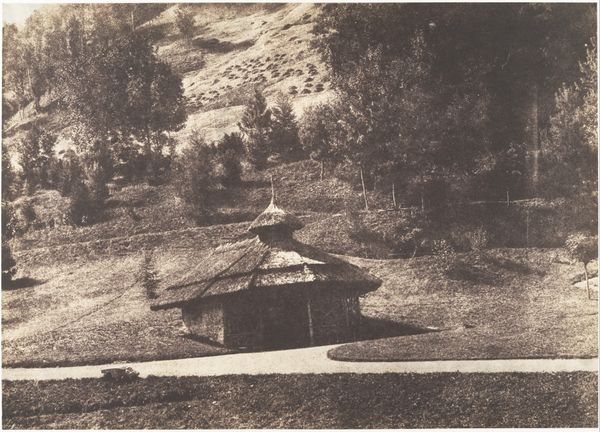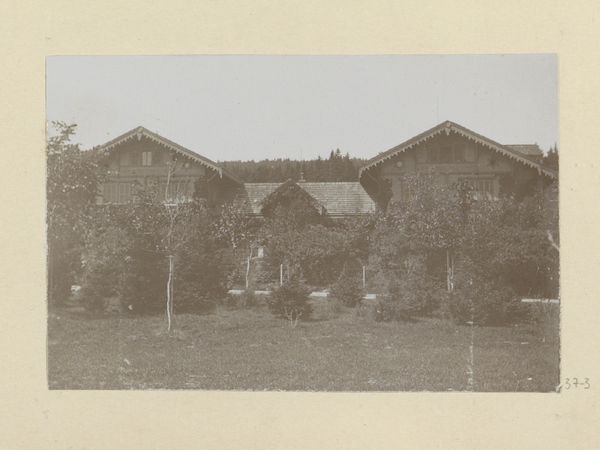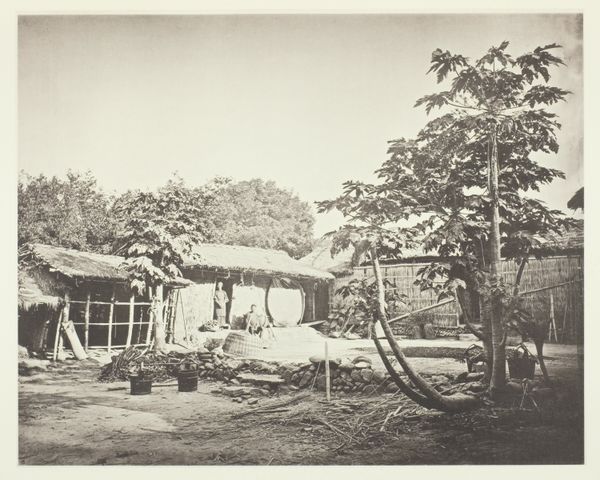
photography, gelatin-silver-print
#
asian-art
#
landscape
#
photography
#
orientalism
#
gelatin-silver-print
Dimensions: height 112 mm, width 85 mm
Copyright: Rijks Museum: Open Domain
Curator: Before us, we see a gelatin silver print by Johanna Hermina Marmelstein, titled "Een straatgezicht in het dorp Batur," or "A street view in the village of Batur," likely taken between 1900 and 1915. What strikes you first about this image? Editor: It's remarkably gray! Almost entirely monochrome, except for a tiny amount of subtle sepia. And incredibly textured – look at the rough stone walls, the woven baskets, and the cloud formations. Curator: Indeed. The artist clearly sought to capture a specific atmosphere in this Balinese village. These types of images from that time are heavily steeped in orientalism, catering to Western perceptions of the "exotic" East. Note how the composition emphasizes the "simple" lifestyle. Editor: Right, it romanticizes the setting, but I'm drawn to the sheer labor that went into constructing these homes, using available local materials. What sort of social narratives were in play? Curator: Marmelstein was Dutch, and during this period, photography was deeply intertwined with colonial documentation. The image can be seen as contributing to the colonial narrative, presenting a constructed version of Indonesian life to a European audience, perpetuating established power dynamics. Editor: Which speaks volumes, given this looks to be one still extant village of its kind, still occupied by people of similar class. In a way, that consistency is more fascinating to me than any fleeting artistic expression! Curator: Absolutely, though we must always consider the photographer's choices and their social context when analyzing such images. This photo participated in a broader visual economy that validated colonialism. Editor: And in capturing that colonial gaze through materiality, one starts to think more about its socio-cultural ripple effects than artistic aspirations! A very textured image with rich and complex undertones indeed! Curator: Yes, it certainly offers a nuanced lens into the early 20th century, compelling us to think about the intersection of photography, power, and representation.
Comments
No comments
Be the first to comment and join the conversation on the ultimate creative platform.

